Almaty Botanical Garden Reconstruction is within Reach of Completion
Three new up-to-date entrance pavilions, beautification of 17.7 Ha of public areas, 2,760 additional cubic meter of water per day for plant watering, 13 kilometers of irrigation canals, many kilometers of drip and automatic irrigation systems, 1,500 grass-root lanterns, 130 surveillance cameras, 250 benches, 50 thousand square meters of renewed roads, 174.3 thousand of new plants are the results of the Almaty Main Botanic Garden reconstruction.
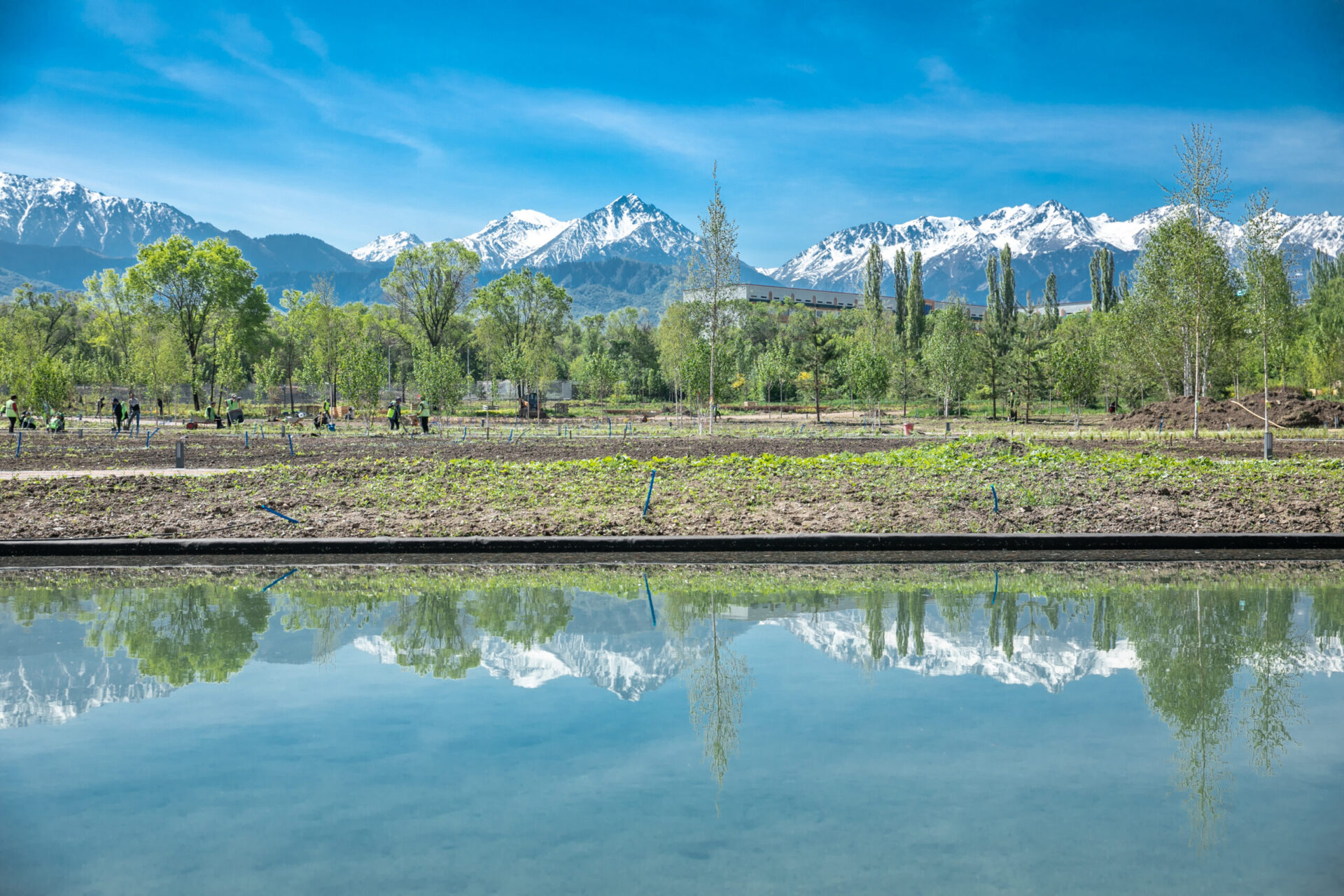
The project was initiated in 2018 by the Bulat Utemuratov’s Foundation at the request of the Institute of Botany and Phytointroduction. The goal of the project was the careful restoration of the botanic garden with preservation of integrity and distinctive character of its territory, modernization of the infrastructure and augmentation of green fund. Its total cost was 15 mln US Dollars.
Completion of the garden reconstruction is planned in the middle of June; currently, activities for construction of paths in the South parterre and access motor road to the South entrance pavilion at the adjacent territory as well as planting and installation of garden furniture are in progress.
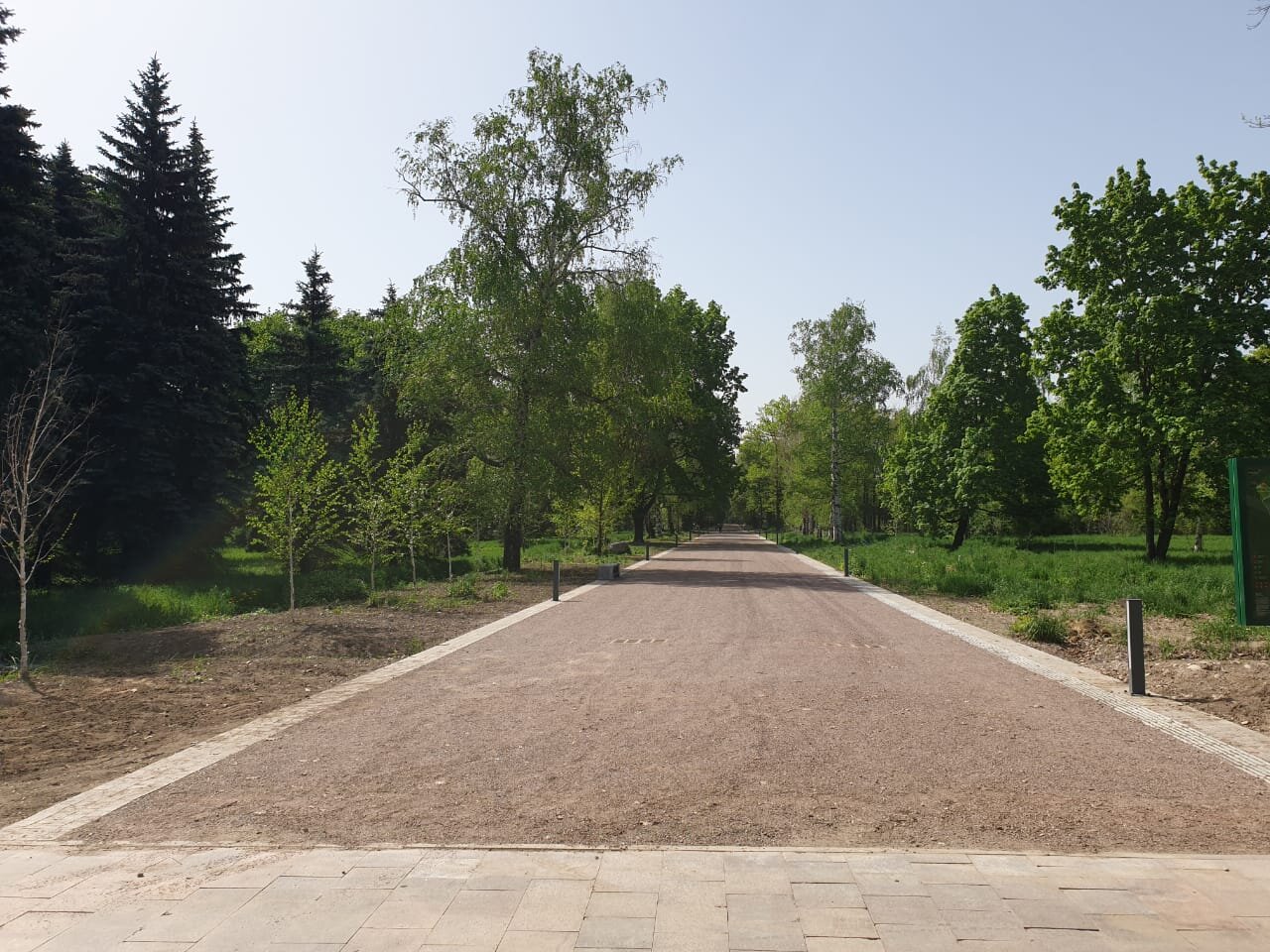
“This is a charity project, in which we have adhered to three main principles. The first principle is a solicitous attitude to the garden plants, preservation and enrichment of flora in close consultations with dendrologists and scientists of the Institute of Botany and Phytointroduction. The second principle is the use of the best international practices and advanced expertise in design, architecture and planning of the infrastructure of specially protected natural areas, use of environmentally friendly, high quality materials for creation of comfortable and safe public space. The third principle is transparency and accountability including carrying out public hearings and regular dialogue with active citizens of the city and environmental organizations about plans of reconstruction work, inter alia, via social networks”, Marat Aitmagambetov, Director of the Bulat Utemuratov’s Foundation said.
Within the scope of reconstruction, 174.3 th. new plants, including rare species and exclusive varieties were planted here, namely, over 1,300 new trees (various varieties of pine, thuja, cherry, apple, pear, plum trees, oak, maple, birch, linden), 40 th. bushes, 130 th. grasses and plurannual, 3 th. roses. True jewel of the renewed garden became sakura, arch from Chantecler pear trees, Royal Red maple with red leaves (planted outside Europe for the first time), climbing roses on pergolas, collections of magnolias, bonsai trees and many other species.
Reconstruction project consultant Igor Glukhovtsev said about the principles of selection of new plants for the Almaty Botanic Garden, “When forming the landscape exposition in the public zones of the garden, natural and climatic conditions of the submontane part of Almaty city were taken into account. As for replenishment of research collections, where activities for approbation of new species and varieties of plants are carried out for possible introduction in the landscape gardening, first of all, we had taken into account the academic interests and wishes of the employees of the Institute of Botany and Phytointroduction.
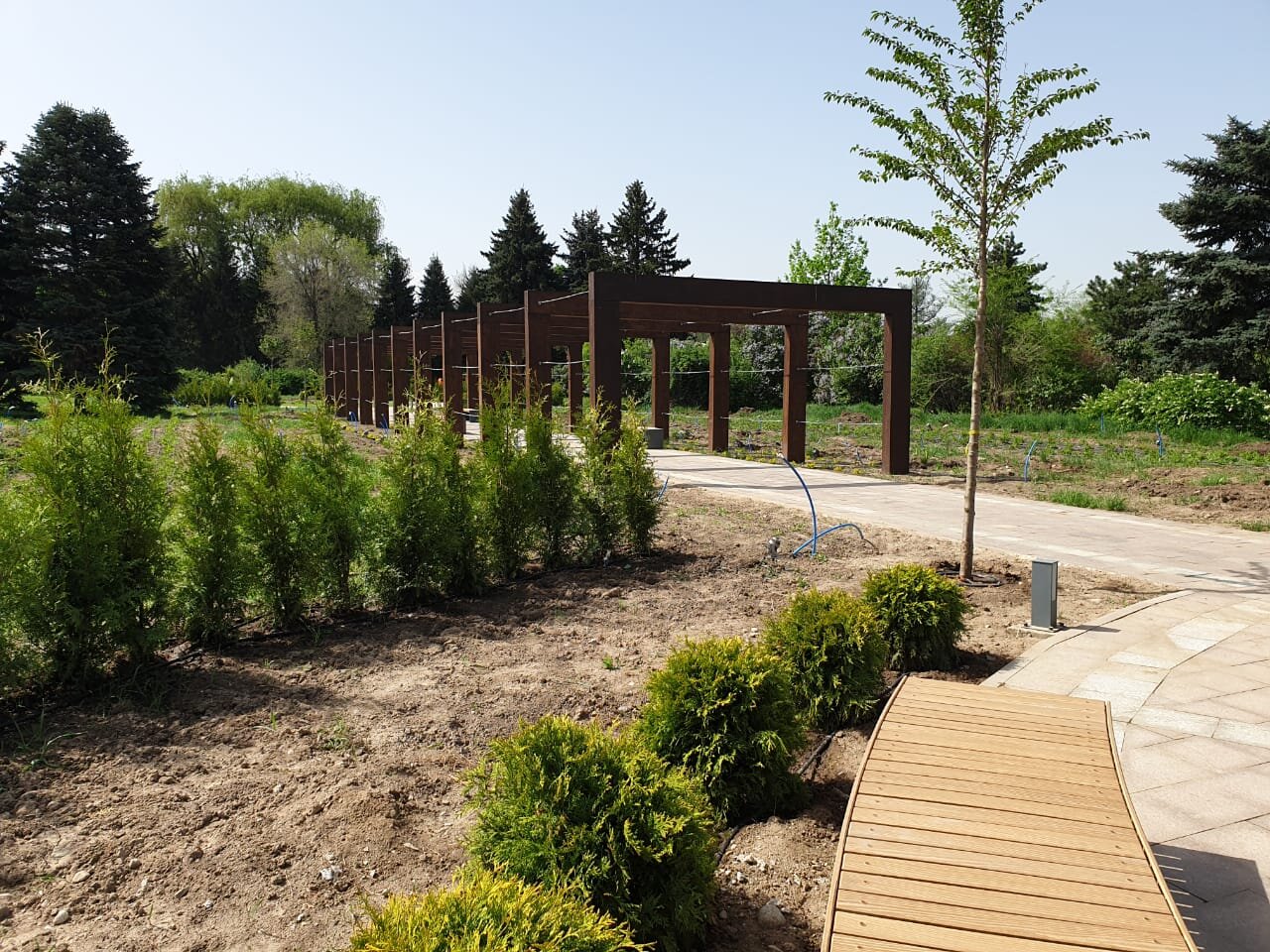
The main problem of the Botanic Garden was shortage of water for plant watering. Within the scope of reconstruction, the irrigation and watering system was restored. Two new water-well holes with capacity of 40 cubic meters per hour each were drilled; throughput capacity of two existing water-well holes was increased from 20 to 25 cubic meters per hour. The water intake structure was built from the Kerenkulak River flowing on the south side of Al Farabi Avenue. More than 600 cubic meters of water per day will be delivered to the garden. Water will flow through the irrigation canal network which total duration is 13 kilometers. Drip and automatic irrigation systems were installed. Water warmed up with the sun from three new ponds in the south parterre and the restored water reservoirs in the north part of the garden will be also used for plants watering.
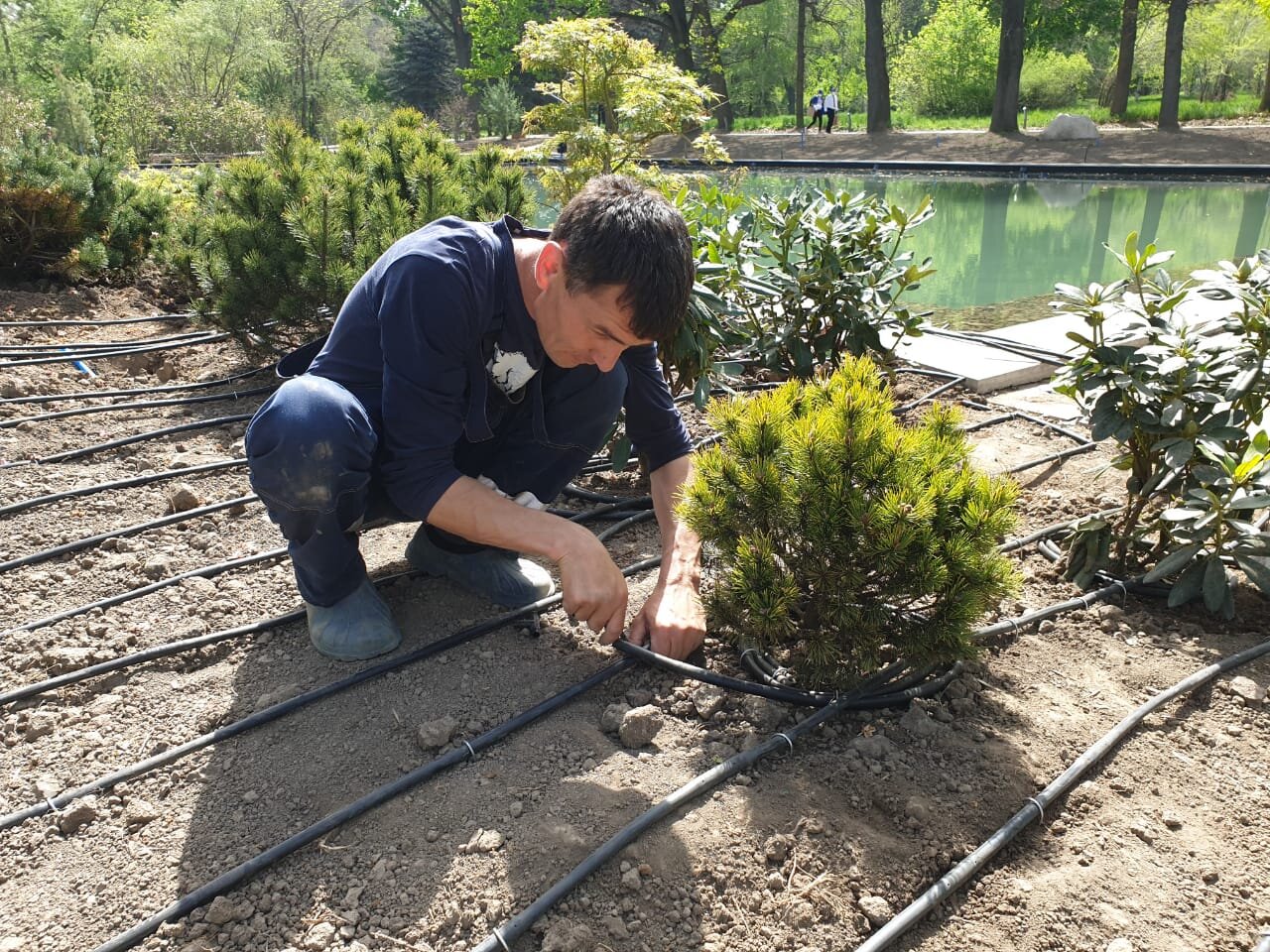
To transform the Botanic Garden into modern, comfort and environment-oriented area, its open zones were cardinally revised. Three new entrance pavilions were erected here. Visitors can go to the garden from Timiryazev Street, Atakent Exhibition Center as well as from Al Farabi Avenue. All pavilions were built from natural materials; they have electronic ticket systems and infrastructure inherent for tourist and public places, namely, gift shops, small cafeterias and toilet rooms.
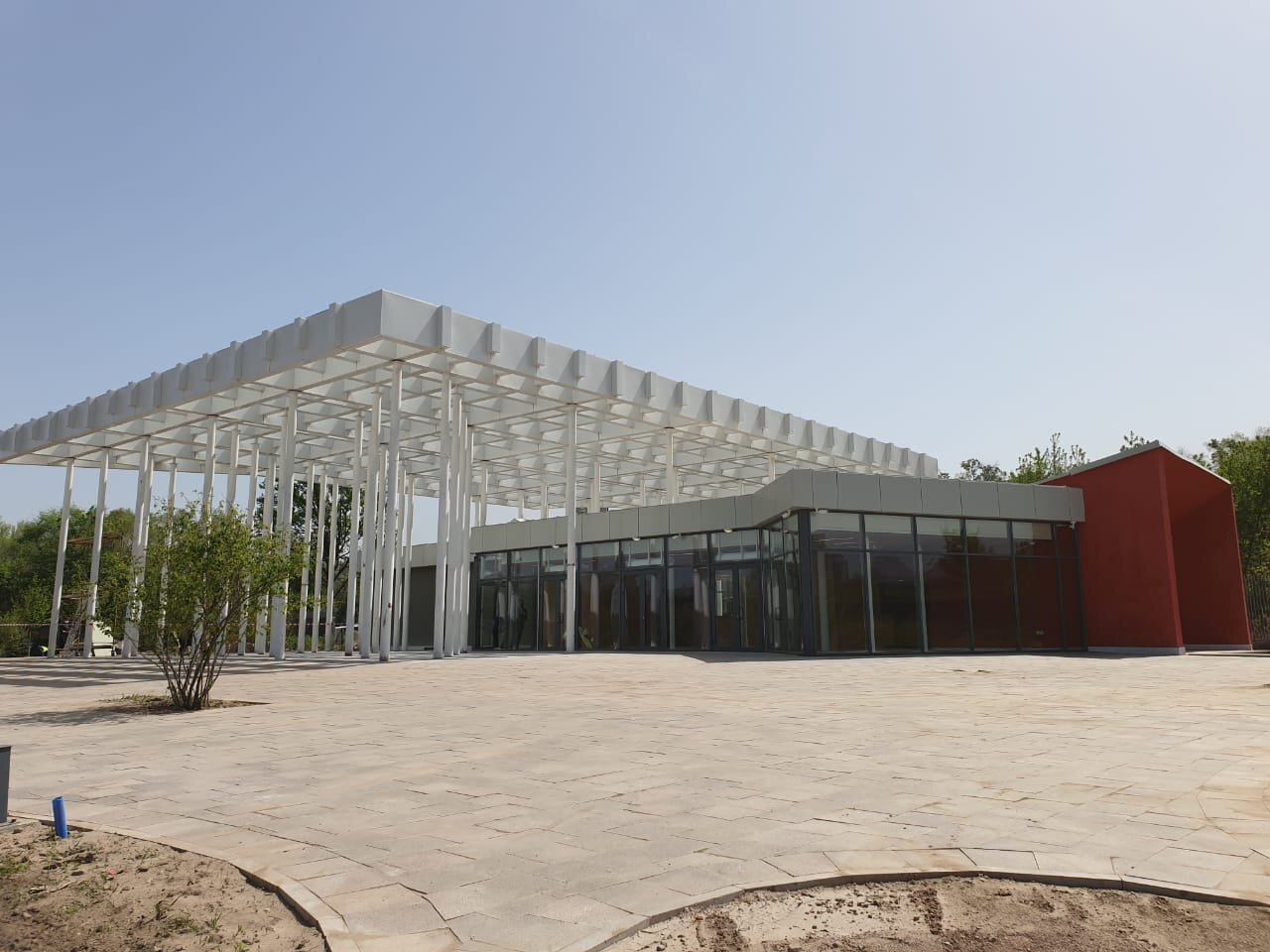
The north parterre was renewed with preservation of its original style according to the drawings of the original design 1932 with adding of new up-to-date elements. In particular, “dry” fountain and water basin with water plants were created here to improve microclimate in these areas. Blossomed trees (sakura) and bushes were planted along the outline, emphasizing distant view and creating shadow. Two pergolas with climbing roses were constructed in the remote part of the parterre from two sides.
The south parterre was created in the submontane part of the garden instead of the waste ground; there are three pictorial ponds, pergola and beautiful miscellaneous herbs field. Within a few years young plants of maple, linden and pine will create shady aisles.

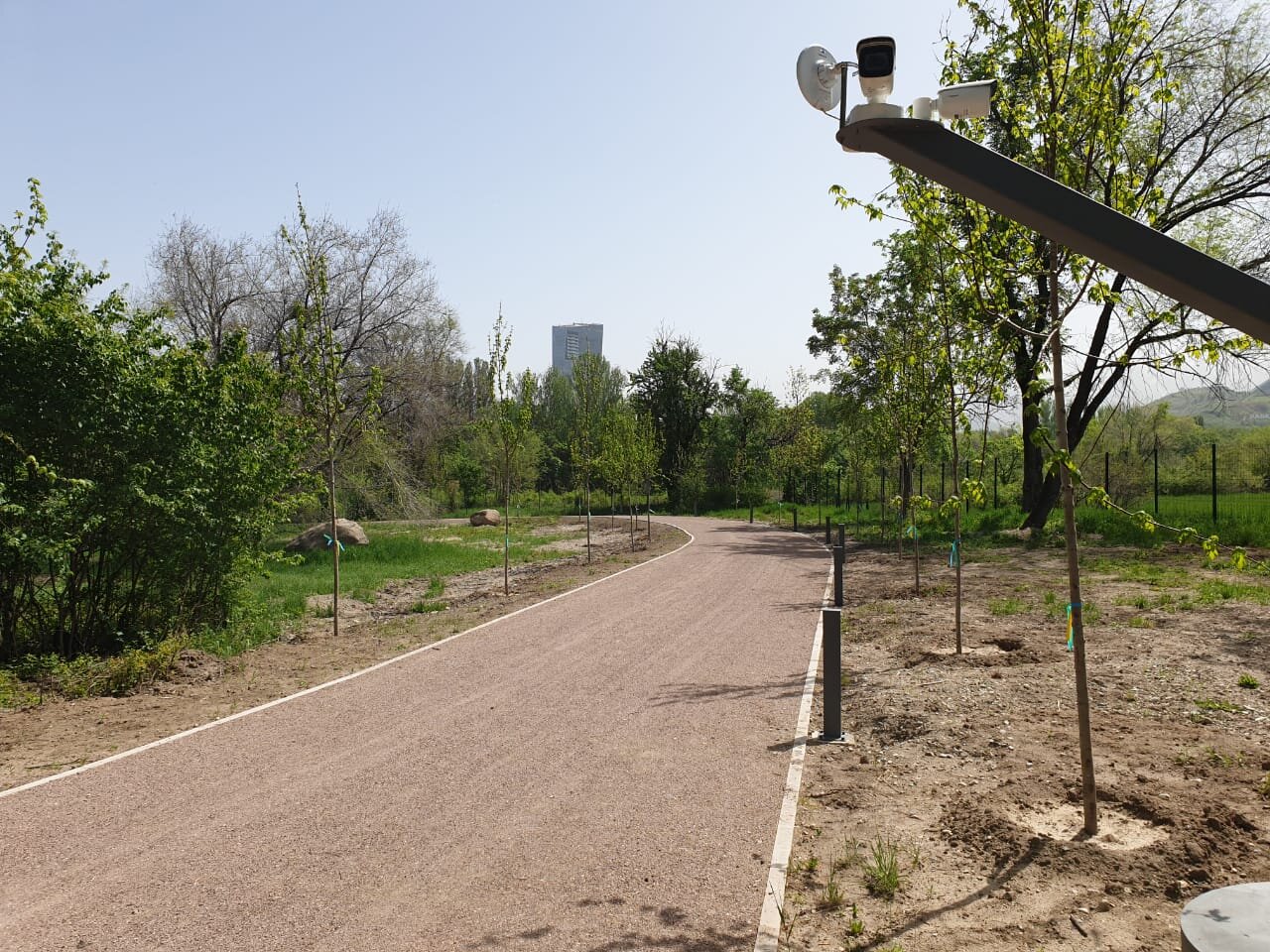
The roads were updated throughout the territory of the Botanic Garden; their total area exceeded 50 th. sq. m. 10 th. sq.m of pedestrian footpaths were made from environmentally friendly covering under German technology applied in the public areas in Kazakhstan for the first time. 250 new benches and 1500 grass-root lanterns complying with the nature’s cycle of trees as well as 1300 surveillance cameras ensuring visitors safety were installed in the parterres and along the roads. For comfort orientation in the garden territory and plants study, the direction signs and information plates as well as the mobile application already available for Android iOS as an information guide on plants collections are provided for.
Special attention was given to availability of all areas of the botanic garden for handicapped groups. Convenient wheelchair ramps were constructed here; tactile paths were laid; there are special toilet rooms in the pavilions.
“Taking into account the special status of the Botanic Garden and high public interests to the reconstruction project, we have provided its complete openness and transparency from the very beginning. The concept and master plan of reconstruction were presented to the general public at the public hearings in summer 2018. The reconstruction sketch plan taking into account the recommendations and wishes of the participants of the hearings was presented in autumn 2018. Three press tours with participation of mass media, public and ecology activists and representatives of the Almaty Akimat were held. Last year, before the beginning of construction activities, the public hearings were held in several stages for assessment of environmental impact of separate parts of the project. Moreover, the Bulat Utemuratov’s Foundation regularly informs about the progress of reconstruction via mass media and at specially created pages in social networks Facebook and Instagram (pages: Main Botanic Garden Reconstruction), where any user may provide feedback or a wish or ask a question,” Marat Aitmagambetov, Director of the Bulat Utemuratov’s Foundation, noted.
